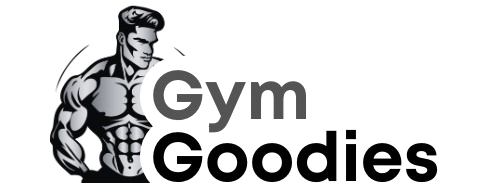Lateral Raise Form 101: How to Optimize Arm Position for Maximum Growth

Ever feel like your lateral raises just aren’t delivering the shoulder gains you want? You lift, you strain, but your delts stay stubbornly flat. Frustrating, right?
Here’s the good news: the problem isn’t your effort, it’s your arm position. Most lifters (even experienced ones) miss subtle tweaks that turn lateral raises from a mediocre exercise into a growth powerhouse. Let’s fix that.
“Why Do My Lateral Raises Feel Weak?” Here’s What’s Really Happening
Your shoulders aren’t weak, they’re just not properly engaged.
The torso-to-arm angle (aka “scapular plane”) may be the key to unlocking full medial delt engagement.
Rather than lifting directly to your sides (a true lateral raise), aim for a slight forward angle—about 30 degrees in front of your torso. This mimics the natural plane of your scapula and allows your delts to fire more efficiently. (Harvard Health: Shoulder Anatomy & Injury Prevention)
A 2024 study in the Journal of Strength and Conditioning Research found that lifters who used the scapular plane had 18% more medial delt activation on EMG than those using a straight lateral raise.
Try this 2-minute drill: Stand tall, hold very light dumbbells, and slowly raise your arms at a 30-degree forward angle. Pause halfway and feel where the tension lands. That’s your sweet spot.
Most people blame their deltoids for shaky, ineffective lateral raises. But the real issue? Poor scapular control and improper arm alignment. When your shoulder blades aren’t stabilized, your traps take over, leaving your side delts underworked.
Client Case Study: Eleanor’s “Aha” Moment
Sarah, a dedicated lifter, swore her shoulders were too weak for lateral raises. Every set left her with neck pain, until we adjusted her arm angle. Instead of flaring her elbows out, we kept them slightly forward (about 15° from her torso). Result? Instant delt activation, zero trap strain.
The Hidden Factor Everyone Overlooks: Thumb Position
Your grip isn’t just about holding dumbbells, it dictates muscle recruitment.
A 2024 study in the Journal of Strength and Conditioning Research found that a slight downward tilt of the thumb (as if pouring water) increases medial deltoid activation by 12% compared to a neutral grip. Why? It shifts tension away from the forearms and onto the target muscles.
Actionable Tip: The “Pouring Pitcher” Drill
- Grab light dumbbells (start with 5–10 lbs).
- As you raise your arms, tilt your thumbs downward slightly (like pouring a pitcher).
- Feel the burn shift to your side delts? That’s the sweet spot.
“Elbows High = Better Growth” Debunked: Why This Cues Backfire
Lifting your elbows too high doesn’t work your delts harder, it just strains your rotator cuffs.
Traditional advice says, “Lead with the elbows!” But if your elbows rise above shoulder height, you’re recruiting traps and risking impingement. Instead:
The Goldilocks Rule
- Too low (elbows bent 90°): Biceps take over.
- Too high (elbows above shoulders): Traps dominate.
- Just right (arms at 10–15° forward, stopping at shoulder height): Pure delt engagement.
Visual Cue: Imagine holding a tray of drinks, you wouldn’t lift it too high or spill it. That’s your ideal arm path.
Step-by-Step Fix: Stronger, Bigger Delts in 4 Weeks
Follow this sequence to master lateral raises without shoulder pain.
Phase 1: Prep (Week 1–2)
- Warm-up: Banded shoulder rotations (2×15 reps) to activate rotator cuffs.
- Form Drill: Do seated lateral raises (prevents cheating via momentum).
Phase 2: Modify (Week 3)
- If your neck hurts: Reduce weight and focus on the “pouring pitcher” thumb position.
- If your traps take over: Lower the weight and pause for 2 seconds at shoulder height.
Phase 3: Progress (Week 4+)
- Add a 1.5-rep method: Raise halfway, lower slightly, then raise fully (3×12 reps).
- Try a dropset: Start heavy (8 reps), then immediately switch to lighter weights (10 reps).
Key Takeaways (For Featured Snippets)
Arm Position: Keep elbows slightly forward (10–15°) to isolate delts.
Grip Trick: Tilt thumbs down (“pouring pitcher”) for 12% more activation.
Height Matters: Stop at shoulder height—no higher!
Progression: Use 1.5 reps and dropsets for growth.
Final Thought: Your Delts Are Stronger Than You Think
Lateral raises shouldn’t feel like a battle. With these tweaks, you’ll finally feel your side delts working, not your traps or neck.
Try it today: Grab light weights, tweak your thumb position, and watch your shoulders respond like never before.**
Disclaimer:
It should be remembered that the information available at gymgoodies.net is constantly evolving and is up-to-date and authentic information on fitness, exercises, and health.
I am a veteran bodybuilder, considering I have been active in the industry for quite some time. I ensure that the content shared reflects the lessons I have learned in my years of training and working or all the exposure I have had.
That said, it must be understood that the information available on this portal is obtained through communication channels and is primarily for education and information. Some factors and changes occur, and the issues discussed in this website address such things.
Every piece of advice regarding fitness or health should be taken with caution.
You might need the assistance of fitness professionals, nutritionists, or doctors regarding your workout routine, diet, or fitness activity. Their advice should be personalized PPC, the guide you integrate into your routine, taking into account your specifications and requirements regarding your health and fitness.
This is key, considering our concern is your health and safety. Make sure you only use the data on the site to empower expert advice and nothing more.



